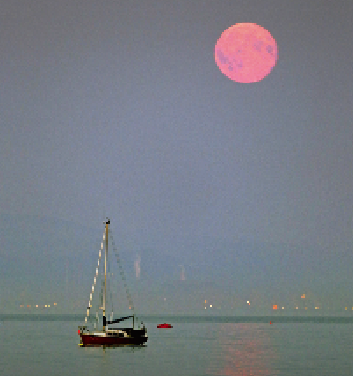We’re about to experience a natural marvel called syzygy.
Jonty and Carol Pearce explain what it means for sailors
“Last year’s super moon produced monster tides, but this year’s two syzygies will generate even bigger ones”
If you think syzygy is a Polish sausage you are, I’m afraid, well off the mark. It’s an astronomical phenomenon where three or more astral bodies fall into perfect alignment. 2015 is the zenith of an 18-year cycle when the sun, moon and Earth fall into syzygy with the added refinement that the moon’s orbit is at its closest to the Earth. The resulting gravitational pull on the Earth’s oceans takes our tides to extreme levels.
And how! Most sailors will have heard of the Lowest Astronomical Tide (LAT) – and, conversely, the highest. Each year’s maximum tidal heights and lows occur at the Vernal Equinox in March and during the Autumnal Equinox in September. In 2015, these peaks and troughs will be at their greatest for 18 years. The world’s second highest tidal range is at Avonmouth in the Bristol Channel, where this year the National Tidal and Sea Level Facility predicts that the Highest Astronomical Tide will be matched at 16.65m and the lowest tide will drop to -0.2m, giving a stupefying tidal range equivalent to a 55ft yacht stood on end. Imagine the length of chain necessary to anchor – for a 4:1 scope, nearly 70m would need to be laid out. Don’t panic, though. This range won’t be seen again until the year 2033.
The implications of this climax of spring tides is far-reaching, and enough to make the national press. Both The Daily Telegraph and The Times have published articles: Flood Warning in the Year of the Super Tides. Three periods of extra-high tides have been predicted; the first passed without incident, while the next two occur around the Vernal Equinox on 20 March and the Autumnal Equinox on 23 September. The Environment Agency has warned of coastal flooding and is monitoring the situation closely, well aware of the possible amplification by low pressure and high winds.
The London Barrage was designed to protect 48 square miles of central London from flooding caused by tidal surges. If it became inoperative on 20 March, the Houses of Parliament, O2 arena, Tower Bridge, Southwark, the Isle of Dogs, Whitechapel and West Ham would all be flooded. While some might heartlessly consider that the drowning of monotonous Parliamentary debates would be no bad thing, another type of bore could benefit – no, not me, the one on the River Severn. As one of the largest bores in the world, these tidal peaks can result in a three-metre wave moving upriver at a speed of up to 11 knots. This equinoctial bore will be well worth a visit.
Never forget that equinoctial tides go down as well as up. On 21 March, the predicted Avonmouth low tide is 20cm below LAT. Subtract a possible extra 30cm if an area of high pressure sweeps
in, and the water level could drop to half a metre lower than we have seen for decades. Whilst most boats will not have returned to their moorings by this time, early launchers run the risk of grounding – and in September, with the majority of yachts afloat, it will pay dividends to be aware of the risks.
Super-tides also have frivolous benefits. Not only it is possible wade between the Scilly isles of St Martins, Samson, Bryher and Tresco, but the opening hours of the Bramble Inn during the annual Bramble Bank cricket match in the Solent would be extended to their maximum!
The saddest thing about syzygy is that although the word is included in the official Scrabble dictionary, its full tally of 75 on a triple word score can never be attained as, with only two letter Y tiles per Scrabble set, a non-scoring blank has to be incorporated!
Also see:




